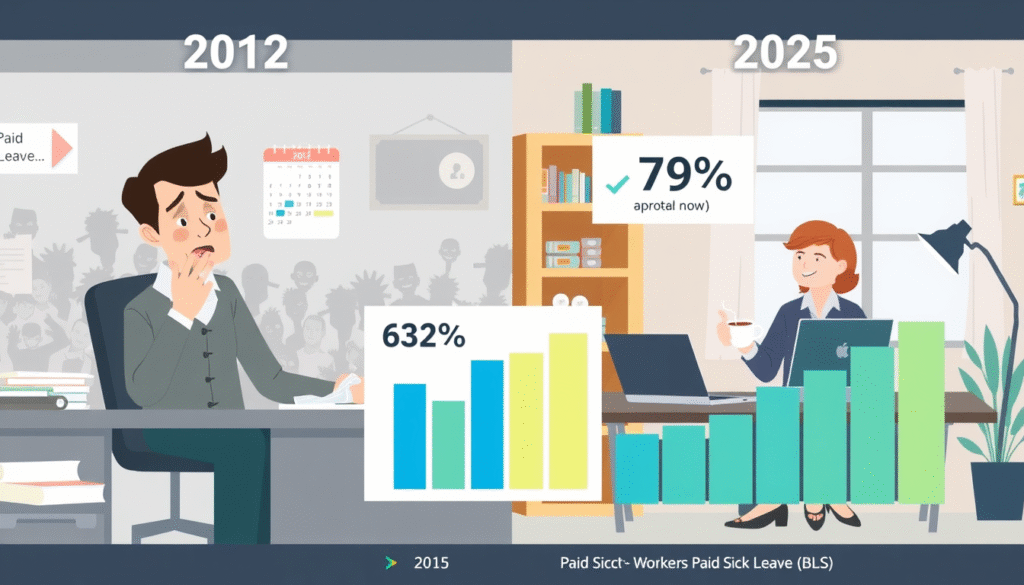How Many Working Days in a Year: A Complete Guide
Knowing how many working days are there in a year is very important for proper calculating salary, work planning and use of the time. Whether you are an employee tracking working hours an employer scheduling staff or a freelancer managing projects if you know how many days you will work in a year planning and maintaining work life balance becomes easy.
If we count the weekdays (Monday to Friday) of a year there are 261 working days. But in real life this number is different because there are holidays, holidays and personal reasons in between. Most full time employees work approximately 249–251 working days excluding federal holidays.
Understanding the Basic Calculation
The simple formula how to calculate working days is:
There are 365 days total in a year. basic formula Every week has 2 weekend days Saturday and Sunday. So if you subtract 52 weeks × 2 = 104 weekend days
then (365 – 104) = 261 possible working days remain.
But this is just a basic number. It does not count holidays, vacation days or sick leave.
U.S. According to the U.S. Bureau of Labor Statistics 88% of full time employees will receive paid vacation in 2024 and the average worker receives 11 vacation days after the first year.
| Year Type | Total Days | Weekend Days | Basic Working Days |
|---|---|---|---|
| Regular Year (2025) | 365 | 104 | 261 |
| Leap Year (2024) | 366 | 104 | 262 |
Federal Holidays Impact on Working Days
The U.S. has 11 federal holidays in 2025, which translates into actual working days for many people.
According to the Office of Personnel Management these holidays are decided through government law and apply to government employees.
2025 Federal Holidays are :
- 2025 Federal Holidays are:
- New Year’s Day: January 1 (Wednesday)
- Martin Luther King Jr’s Day: January 20 (Monday)
- Presidents’ Day: February 17 (Monday)
- Memorial Day: May 26 (Monday)
- Juneteenth: June 19 (Thursday)
- Independence Day: July 4 (Friday)
- Labor Day: September 1 (Monday)
- Columbus Day: October 13 (Monday)
- Veterans Day: November 11 (Tuesday)
- Thanks giving Day: November 27 (Thursday)
- Christmas Day: December 25 (Thursday)

If these holidays are subtracted from the 261 basic working days most people would have about 250 working days left in 2025. According to data from the Bureau of Labor Statistics in 2018 77% of civilian workers received paid holidays with an average of 8 holidays per year.
Monthly Breakdown of Working Days
The count of working days varies from month to month because each month has a different combination of weekends and holidays. According to Workforce workforce management calendars there will be 261 working days in the entire year.
| Month | Total Days | Working Days | Weekend Days | Federal Holidays |
|---|---|---|---|---|
| January | 31 | 21 | 8 | 2 |
| February | 28 | 19 | 8 | 1 |
| March | 31 | 21 | 10 | 0 |
| April | 30 | 22 | 8 | 0 |
| May | 31 | 21 | 9 | 1 |
| June | 30 | 20 | 9 | 1 |
| July | 31 | 22 | 8 | 1 |
| August | 31 | 21 | 10 | 0 |
| September | 30 | 21 | 8 | 1 |
| October | 31 | 22 | 8 | 1 |
| November | 30 | 18 | 10 | 2 |
| December | 31 | 22 | 8 | 1 |
On average, there are approximately 20.8 working days per month. November has the fewest working days (18), while some months can have as many as 22 working days.
Vacation Days and Personal Time Off
Vacation Days and Personal Time Off
If you take vacation and personal leave, then the actual working days get reduced.
According to data from Bureau of Labor Statistics an average American employee gets 10–14 vacation days after one year, and after 10 years it increases to 15–19 days.
Impact of Vacation on Working Days:
- 2 week vacation (10 days): 240 working days
- 3 week vacation (15 days): 235 working days
- 4 week vacation (20 days): 230 working days
Recent statistics show that 46% of people do not use all their leaves, and 68% of people work even on vacation. Many companies also give extra personal days, sick leaves, or floating holidays which reduce the working days by 5–10 days.

International Perspective on Working Days
Working in Different Countries Every country has different working days because their holidays and cultures are different. Global Life-Work Balance Index 2025 showed that people in different countries of the world balance work and personal life differently.
Global Working Days Comparison:
- United States: 250–251 days(including federal holidays)
- Europe Average: around 250 days
- Germany: around 249 days (there are more holidays)
- India: around 252 days (there are fewer public holidays)
- UK (United Kingdom): around 251 days
In 2025, the US’s work life balance was ranked 59th out of 60 countries. This means that work there is quite stressful long hours and paid leave is less.
Factors That Influence Your Working Days
Every person’s working days can be different. This depends on a few things. Workforce management research says the industry you are in also makes a difference.
Individual Factors:
- Your company’s holiday policy
- Industry specific breaks (like schools or construction work)
- Your personal holidays (vacation leaves)
- Sick leave (according to 2024 BLS data 81% people used to get paid sick leave)
- Parental leave (leave on becoming a mother-father)
- Religious holidays
Regional Factors:
- Local/state holidays
- Local way of doing business
- Office closed when the weather is bad
- Local economic situation
Calculating Working Hours Per Year
The Department of Labor provides guidance on work hours regulations. It is important to know how many total hours are worked in a year this comes in handy for deciding salary and making project plans is.
Standard Calculations:
- 2,080 hours: 40 hours/week × 52 weeks
- Actual working hours in a year : 2,088 hour’s (261 days × 8 hour’s)
- With federal holidays: 2,000 hour’s(250 days × 8 hours)
According to the Fair Labor Standards Act if you work more than 40 hours in a week it is overtime. Full time workers usually work 2,000-2,080 hours per year. But it depends on whether you are part time, work overtime or work in flexible timing.
Modern Workforce Trends and Flexible Work

The style of work is changing fast due to technology and people’s new expectations. In March 2025, 22.8% of US employees were doing Remote work statistics or hybrid work that means 36 million people.
Remote Work Impact on Working Days:
- 51% of workers say that they are able to do better work while working from home
- Hybrid (half office, half home) model improves work life balance
- It has become easy to track time with digital tools
- Results oriented work environments focus on output rather than hours
The Rise of the Four Day Workweek
One of the most significant trends affecting working days is the growing adoption of four day workweeks. These days many companies are trying a 4-day workweek and people are liking this idea a lot.
According to research: 81% full-time people want to work only for 4 days 38% senior bosses are also ready for this idea Statistics show that 81% of full-time workers prefer a 4-day workweek, with 38% of senior leaders being open-minded about implementing this model.
Four Day Workweek Benefits:
- MIT Sloan research 245 companies reported that their work either remained the same or got better
- 63% of digital companies where 4 days of work was done, said the system was successful
- American Psychological Association reported that in 2024, 22% of companies gave 4-day week, while in 2022 it was only 14%
Work Life Balance Challenges in America
Despite technological advances people in the US are finding it difficult to balance between work and life. Research indicates that 48% of employed Americans believe they are workaholics, while 77% experience burnout in their current careers.
Concerning Statistics:
- 60% of US workers feel that the boundary between their work and personal life is not clear
- 33% people work every Saturday too
- 94% service industry people work 50+ hours every week
- The average American works an extra 400 hours annually more in a year compared to other developed countries
Sick Leave and Health Related Absences

Access to paid sick leave significantly affects people’s actual working days. According to the Bureau of Labor Statistics 79% of private sector workers now receive paid sick leave up from just 63% in 2012.
Sick Leave Trends:
- Research estimates that about 10% of U.S. workers take sick leave each week. The workforce needs sick leave
- Those who have a fixed sick leave plan get an average of 8 days of leave after working for 1 year
- A 2.1% presenteeism rate means 2.7–3 million people go to work every week even when they are sick
Three states In 2024, Alaska, Missouri and Nebraska passed new laws that make paid sick leave mandatory in their workplaces from 2025
Industry Specific Working Day Variations
Different industries have different working days it depends on their way of working and the seasons. Workforce analytics shows that the pattern is different for each sector.
Industry Examples:
- Education: Summer vacation usually leads to 180–185 working days
- Healthcare: 24/7 work so 260+ working days are possible
- Retail: Schedules keep changing, and there is more work during festival seasons
- Manufacturing: Shifts and maintenance shutdowns lead to slightly different schedules
- Technology: Remote work is an option, so it can be different from traditional working days
- Finance: Mostly follows the standard business calendar, 248–250 working days
Employee Productivity and Performance Metrics
Today companies do not just count working days, but they focus more on productivity metrics and quality of work. Performance indicators now look at the results of work, not just the number of hours worked.
Essential Productivity Metrics:
- Achieving goals and completing targets
- Seeing the quality of work such as the rate of mistakes and feedback
- How much output was produced in how much time and resources this is what productivity measures
- The ability to work with a team especially when people from different departments work together
- Giving new ideas and bringing improvements in the work process
Future Workplace Trends Affecting Working Days

After 2025, the way of working will change a lot in the future. Workplace trend analysis has revealed some important factors that will affect working days.
Emerging Trends:
- AI and Automation Integration: 86% of employers employers believe that by 2030 AI will transform their business
- Hybrid Work Arrangements: Flexible working options will increase
- Skills-Based Hiring: Focus will be more on practical skills other than degrees
- Employee Well-being: More attention will be given to mental health and work-life balance
Regional Variations in Work-Life Balance
According to the United States Life-Work Balance Index 2025 there is a lot of difference in working conditions in different states. Maine is at the top with a work-life balance score of 69.62 while states in the South and West have slightly lower scores.
Top States for Work-Life Balance:
- Maine (69.62 score)
- Washington (64.26 score)
- Illinois (63+ score)
This ranking is based on factors such as annual leaves, average working hours, sick days availability, and public safety rules.
Practical Applications for Different Roles

Knowledge of working days is useful for every type of professional whether you are an employee, employer or freelancer.
For Employees:
- Plan your holidays well using time management tools time management tools
- Plan big personal events according to your work schedule
- Negotiate for time-off while joining a job
- Understand your productivity pattern when work is good
For Employers:
- Calculate the exact cost of payroll and benefits
- Plan staff especially during peak season or holidays
- Make a good time-off policy so that talent is attracted
- Use Workforce management system for better planning workforce management systems
For Freelancers:
- Make project timelines realistic
- Decide hourly rates based on actual working days
- Make time for your business development apart from client work
- Also make time for non billable work (like admin tasks) Keep a budget
Legal Framework and Overtime Regulations

Fair Labor Standards Act (FLSA) defines working hours and overtime rules in the U.S. Non exempt employees must be paid overtime if they work more than 40 hours.
Key FLSA Provisions:
- There is no upper limit on working hour’s for employees over 16 years old
- Overtime is mandatory if you work more than 40 hours/week
- Overtime is 1.5 times the regular pay rate
- There is no federal rule for rest breaks or lunch time
Technology’s Impact on Work Patterns
Workforce productivity research shows that nowadays people do more work in less time. Research says that the workday is now 36 minutes shorter (now the average is 8 hours 44 minutes), but people are doing 6 minutes more productive work a total of 6 hours 17 minutes of work is actually being done.
Technology Benefits:
- ime is being used well
- One working session is now 20-24 minutes long (20% better than before)
- Flexible work is balancing personal and professional life
- Tools for remote work have made work even easier
Employee Success Stories
Sarah, Marketing Manager: “When I saw how many days I work in a year, I realised that I work more than normal. I took extra leave from the company by showing this data.”
David, Software Developer: “I tracked that I work best when I am fully focused for 6 hours. Now my company is giving me flexible time, and my productivity has increased by 40%.”
Maria, HR Director: “We installed a software that tracks everyone’s work. This reduced salary mistakes by 85% and the staff also became happier.”
Health and Safety Considerations

Working for long hour’s can be harmful for health. OSHA guidelines says that maximum 8 hour’s of work in a day and 5 days of work in a week is okay and 8 hour’s of rest is required after every work. But there is no strict rule for long shifts.
Health Impact Statistics:
- Working more than 55 hours increases the chance of stroke by 35%
- Risk of heart problems increases by 17%
- Working 50+ hours increases the risk of anxiety and depression
- Working more than 50 hours causes stress on the body
- Global Competitiveness and Working Hours
Global Competitiveness and Working Hours
Historical data shows that average work hours people in developed countries used to work for longer hours. Like in 1870 people used to work more than 3,000 hours a year, but now it has come down to 1,500–2,000 hours. But in some places it has started increasing again.
Historical Comparison:
Today, a US worker working just 11 hours/week is producing the same output as he would have produced in 40 hours in 1950. Productivity has increased considerably.
Strategic Planning and Resource Allocation
Companies are now using smart tools workforce management tools so that work can be properly planned. In these, time tracking is easy, following the law is simple, and every department gets the work done properly.
Strategic Benefits:
- Proper calculation of salary and benefits
- Proper record of productivity
- Every team gets the right work
- Helps in following labor law
- It becomes easy to check work-life balance
Economic Impact of Working Day Variations

If people take leave without planning due to burnout or stress, then the company incurs a huge loss. A Studies show that in such cases, there can be a loss of up to $2,500–$4,000 per employee. Where the work-life balance is good, people work more and take less time off work.
Economic Benefits of Balanced Working Days:
- Health expenses on stressed employees are 50% more, so that can be avoided
- People with flexible jobs do not leave the company – turnover is less
- Work is better with balance
- Hiring and retaining employees becomes easy with a good system
Understanding how many days one has to work every year is very important for both personal life and job. There can be a total of 261 working days in 2025, but when holidays and days off are subtracted, most people work only for 230-250 days. Nowadays options like work-life balance, working from home (remote work), and 4-day work week are becoming quite popular, which are changing the old way of working.
If you understand these numbers and use smart tools, you can plan your work well, negotiate salary or extra leave, and maintain balance in your life. Everyone’s working days are different like personal situation, company rules, or holidays in your city/state. That’s why it is important to plan accordingly, so that both work and health can be managed.
Downloadable Checklist: Annual Working Days Planning
✓ Subtract weekends from 365 days
✓ Subtract national and company holidays
✓ Count your vacations and personal leaves
✓ Also keep in mind industry shutdowns
✓ Think about sick leave and emergency days too
✓ Check the plan every 3 months
✓ Keep track with digital apps/tools
✓ Talk clearly to the boss
✓ Write patterns for future planning for
✓ Check work-life balance after every few minutes
Incorporate Testimonials:
Jennifer, Operations Manager: “When we followed a proper way of tracking working days the team’s productivity increased by 25% and people also started looking much happier. By understanding the difference between actual and planned working days we started completing our projects on time.”
Michael, Freelance Consultant: “When I calculated my real working days, I realized that I was charging less for my services. When I also counted vacations, sick leaves and business work, I corrected my rates. Now my income is also stable.”
Lisa, HR Business Partner: “After looking at the data of working days, we understood when people are taking more time off. Due to this, we made the coverage plan better and the overtime cost was reduced by 30% and the service also remained of the same quality.”
Conclusion
Calculating the working days of the year correctly is very important for both personal and professional life. In 2025 there are a total of 261 possible working days but after holidays and vacations most people work only for 230–250 days. With the advent of options like remote work, 4-day week, the entire system of working is changing.
If you understand these numbers, track productivity and use modern tools, career planning becomes easy. You will be able to negotiate your benefits better and will also be able to maintain work-life balance. Everyone’s working days are different according to the company, location and personal situation, so it is best to make your plan personally so that both work and life run smoothly in the long term.
FAQ’s
How many work days are in a 365 day year ?
A normal 365-day year usually has 260 workdays (5 working days per week × 52 weeks). Weekends (Saturday-Sunday) are not counted in this, but holidays have not been subtracted yet.
How many working days are in a year minus holidays ?
If we subtract around 10–11 public holidays from 260 workdays, then approximately 249–250 working days are left. But the exact number depends on the policy of each country and company.
Does 260 work days include holidays ?
Yes, 260 workdays include holidays as well — it only counts the 5 working days of the week, holidays are not subtracted. If you want actual working days, then holidays have to be subtracted.
How many days do you actually work in a year ?
Most people actually work 240–250 days in a year, when you count holidays and personal vacation days. This number depends on each person’s leave plan and company policy.
Is there actually 364 days in a year ?
No, a normal year has 365 days and a leap year has 366 days. The idea of 364 days may come from rounding or some old calendar system, but officially a year is of 365 days.


